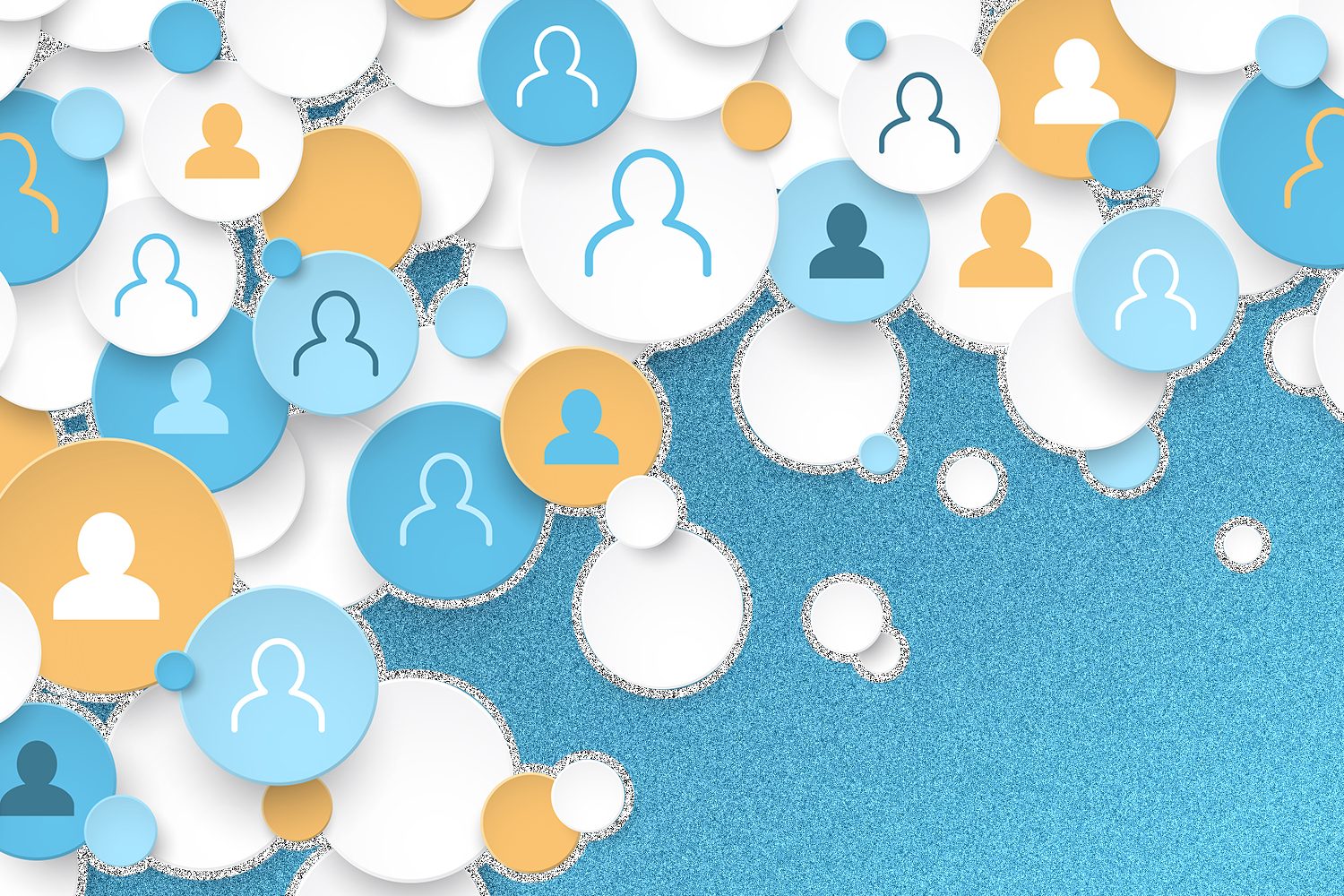As companies continue diversifying their workforce, equally important are the measures they take to create an inclusive and equitable workplace that engages and uplifts employees from marginalized backgrounds. One way to create an inclusive work environment is through robust diversity, equity, and inclusion (DEI) training.
Although most employees (56%) surveyed by the Pew Research Center agreed that focusing on increasing DEI initiatives is a good thing, 48% of respondents said their organization does not hold DEI training and meetings. By failing to close these knowledge gaps, leaders continue perpetuating biases that show up in work interactions and negatively affect their colleagues’ experience.
Meanwhile, organizations that effectively weave DEI training into employees’ lifecycles will see lower turnover rates, a boost in employee engagement and morale, and better financial performance. Diverse and inclusive work cultures also attract top talent, especially Gen Z, which values DEI more than any other generation and will comprise more than a fourth of the workforce by 2025.
You don’t have to do this alone. To get the best results, you shouldn’t. When developing your diversity training programs, ask your employee resource group (ERG) leaders for guidance. Members of your company’s ERGs will be able to identify which topics are most relevant to your company to help you decide what to focus on first.
Based on interviews with DEI leaders spanning industries, here are seven conversations you should be having through DEI training. A few metrics you can track to measure the effectiveness of these conversations is by tracking your attrition and rates, promotions, pay equity, and performance.
1. Psychological Safety
Constructive training is underpinned by a psychologically safe environment that makes employees feel comfortable sharing their experiences and engaging in an honest dialogue. Unfortunately, Gallup data found that just three in 10 U.S. workers strongly agree their opinions seem to count at work. Psychological safety training across all levels can help increase that number, leading to an increase in productivity and a reduction in turnover.
“Part of creating an inclusive environment means that everyone is seen and respected so that if you see something, whether good or bad, you’re comfortable speaking up. That’s what psychological safety is,” says Deb Grimes, the chief diversity officer at Ochsner Health, the largest non-profit, academic healthcare system in Louisiana.
Henry Jones, senior director of diversity and inclusion at Conagra Brands, says the food company focuses on five inclusive behaviors to create a psychologically safe environment: genuine listening, mutual respect, healthy debate, compromise, and civility. “If you’re a people leader, it’s critical that you’re actively listening, taking input from your employees, and engaging in healthy debate so people feel free to bring their ideas to the table. Then, you leverage all of those differences to drive our business.”
According to research from Ecsell Institute, managers whose overall skills rate higher in areas like psychological safety lead teams that bring in an average of $4.3 million more in revenue per year. The research further indicated four things managers can do to increase psychological safety: encourage unique opinions, avoid micromanagement, support smart risk-taking, and move quickly past mistakes.
2. Unconscious Bias Training
Sometimes called implicit bias training, these sessions delve into how individuals may rely on stereotypes or assumptions that further oppress marginalized groups. Understanding these biases can help teams identify inequitable practices and start their journey toward change.
“All employees go through unconscious bias training,” says Robin Lykins, chief people officer at a deep linking mobile platform Branch. “It is based on the experience of Nobel Prize-winning author, Daniel Kahneman.”
K.C. Simmons, director of learning and development at Branch, further explains that the workshop dives into the neuroscience behind unconscious bias. That includes research studies, along with different types of microaggressions, how to become an ally, and the ladder of inclusion.
“It’s super important for organizations and leaders to understand that this is a first step in a many-step journey,” says Gianna Driver, chief human resources officer at software company Exabeam. In this way, Driver hopes that training will allow employees to have conversations that are grounded in the same vocabulary and understanding of one another. She views this as necessary when discussing everything from performance management to promotions or hiring, as Exabeam aspires to approach all of these areas through the lens of being more diverse and inclusive.
Effective unconscious bias training raises awareness and changes behavior. Aubrey Blanche, the senior director of people operations and strategic programs at Culture Amp and a member of the Senior Executive DEI Think Tank, suggests contextualizing training by making it a multipart series or conducting it throughout an employee’s lifecycle. For example, host an unconscious bias training session before a hiring cycle for managers involved with the hiring process, and again ahead of performance evaluations.
“If you’re giving people specific, actionable guidance in a context where they understand how they’re going to use that guidance, they’re much more likely to do it, which gets you to reducing bias in the first place,” Blanche says.
3. Inclusive Language and Communication
Sometimes called inclusive language training, inclusive communication sessions deconstruct how words may unknowingly alienate certain groups while prioritizing others. Inclusive communication helps your team use language rooted in belonging.
“We have utilized the time to explore the origin of certain expressions and their impact on various groups — whether in reference to women, LGBTQIA+, race, ethnicity, or others,” says Dr. Lusharon Wiley, vice president of the corporate culture at Innisfree Hotels. She says inclusive communication allows her team to examine expressions and terms that may be embedded with historically-influenced biases. As staff navigates the learning process, change often occurs incrementally in small and large group sessions.
“Being able to integrate DEI training into what we call interview training, which is our basics for managers on how to conduct interviews,” says Lykins. “If you have alignment with your leadership, and they see the business value, it’s easy to weave these things into the work.”
Lykins notes how training includes interactive breakout sessions like “Your Trusted People” where employees look at who is in their circle of trust to highlight how trust may be assigned based on who looks like them, which can help individuals to acknowledge their biases. “In interview training, we focus on why it’s critical to evaluate skills and competencies for the role rather than perceptions and how to share unbiased feedback on candidates for internal discussion,” she says.
Driver shares a visualization exercise from Exabeam’s DEI training that asks participants to close their eyes as they are told a story in which they are late for a flight, rushing through a busy airport, but finally settle in and hear the pilot welcome them aboard. When they arrive, they rush off the plane and attend a keynote talk given by the CEO of one of Silicon Valley’s hottest startups, then head to a fancy restaurant, where a couple celebrates their wedding anniversary.
“Then we ask DEI workshop participants to open their eyes. We ask them: Who was the pilot? Was the pilot a female? Was the tech CEO female? Black? Latinx? Was the couple celebrating their anniversary two men? Two women?” says Driver. “We then go into empathy-building by talking about how marginalized groups — Black folks, Latinx folks, same-sex couples, etc. — might feel in these situations with these assumptions. Then there are breakout groups to dive deeper.”
Ashley Blackmon, diversity, equity, and belonging program manager at vertical farming company Plenty, says her team is training managers on emotional intelligence and inclusive management. “For example, if you are a manager, are you going to advocate for the people on your team and what does that look like?” Blackmon explains. “Again, based on those intersecting identities, and if you aren’t working with a peer, what does it mean to be an advocate for marginalized groups?”
Creating an inclusive environment is half the battle; the other half is masterfully communicating that inclusion. Corina Kolbe, the vice president of talent success at Zillow, says one of the real estate company’s most popular courses is “Presenting with Polish.”The virtual class allows participants to engage in breakout sessions where they work with a coach in small groups to improve their presentation skills, including speaking over Zoom. “Communication is essential now that we’re living in a distributed world. [This course] covers all aspects of communication: written, how you present in a meeting, and how you speak in front of your team.”
Senior Executive DEI Think Tank is a criteria-based membership community for chief diversity officers and senior-level DEI leaders at large organizations to share difference-making tactics, trade valuable resources, and seek the counsel of experienced peers in a private, confidential setting.
Do you qualify?4. Cultural Competency
While cultural competence was originally used in healthcare settings, such training has gained credibility among business leaders across industries. Cultural competency is a tool that equips teams to work with people from different backgrounds by improving self-awareness of one’s own culture. This training can prevent offending others, both intentionally and accidentally.
“When we talk about cultural competence, a fact sheet about different countries and a fact sheet about different communities are not enough to really train people,” says Ashley Blackmon, diversity, equity, and belonging program manager at vertical farming company Plenty. While the company only operates in the U.S. at present, Blackmon notes that her team aspires to be a company that is global eventually, so leaders ensure that every team member is culturally competent and self-aware to check their own biases.
“The core principles of leading organizational change apply to DEI work,” says Chase, who also founded an HR strategy and consulting firm, Diversity Way-Maker Consulting.
Chase’s consultancy trains and coaches C-suite leaders in values-based competencies. “When top leaders are fully on board and understand their role in championing DEI strategy, they will unabashedly and vocally advocate for change,” she says.
5. Empathy and Belonging
These sessions are grounded in the understanding that empathy can drive actions that improve belonging for more marginalized groups. Empathy and belonging training encourage individuals to engage in dialogue and understand perspectives different from their own.
“We truly believe that cultural competence and inclusive communication is that baseline learning that every organization, and…every team member in our organization has to ensure that we are a company that understands and leads with empathy,” says Blackmon. “We really need a layered learning journey that reinforces those types of behaviors and those competencies that we actually want to see across the organization.”
Given how empathy can drive change, it is no wonder that Wiley wishes the public better understood that diversity results in greater profit. “The more diverse the people are at the table, the more diverse the thoughts, the richer the discussion, and the greater the reach. In this world of globalization, diversity, and inclusion matter now more than ever. When team members feel valued, heard, and included, the synergy they create is an unstoppable force,” says Wiley.
As an example, Wiley shares how a recent exercise asked corporate managers to think critically about privilege, including how it is defined, and its impact on individual development and access to opportunity. “This powerful topic forced team members to examine their backgrounds in the context of advantages they might have experienced when compared with others,” she says.
Jones adds Conagra’s middle managers, which comprise 65% of the company’s people managers, participate in empathy workshops. Conducted by development and HR consultant firm Development Dimensions International, these sessions focus on improving communication between managers and employees. “That population [of middle managers] has such a huge impact on driving employee engagement through their behaviors, we focused that financial investment on that population,” Jones says.
6. LGBTQIA+ and Gender Inclusivity
Kolbe was encouraged to provide pronoun training at Zillow after a conversation she had with members of its Pride affinity group. “Our pride network came to us and said, ‘There’s a topic that we’re really passionate about, that we have a lot of expertise on, and we really want to share that with all of our employees and help educate them to create a more inclusive and belonging environment,’” says Kolbe.
After that conversation, Zillow’s Pride affinity group helped shape and present content, such as terminology surrounding pronouns, gender, sex, and identity, and how to ask someone for their pronouns. Now, Zillow University, which is the real estate company’s learning management system, offers an optional pronoun training course available for all employees.
Meanwhile, Conagra has embedded pronoun training into its Pride Month activities. “We have Center on Halsted present an overview of the history of the LGBTQ+ community and part of that was how our employees can be allies to that community. Part of that was a few slides around pronouns and the importance of recognizing someone’s pronouns,” Jones says. On Transgender Day of Remembrance, Jones adds Conagra sends a toolkit explaining why employees should incorporate their pronouns into their signature and how to do it.
At Dartmouth Health, Dr. Terri Malcolm, the vice president of diversity, equity, inclusion, and belonging at the academic health system and another member of the Senior Executive DEI Think Tank, says data from a DEIB assessment led to a systemwide update to badges. “One of the initiatives we’ve taken on is around affirmed and preferred names,” Malcolm says. “While we were using pronouns, or pronouns could be listed on your badges, that was not necessarily widespread…we were still defaulting to using your legal name, and many people prefer to not use their legal name when introducing themselves or in the work environment.” Malcolm collaborated across the health system to allow employees to list their preferred names and pronouns, creating a more inclusive environment for all employees.
7. Emotional Intelligence
To build a more inclusive culture, Jones shares that Conagra provides biannual self-paced e-learning content via modules covering a range of topics. Most recently, it launched “Developing Your Emotional Intelligence,” which helps employees understand where they are on their emotional intelligence journey and work through their differences to productively collaborate and innovate.
The training starts by defining emotional intelligence and providing examples of how it shows up at work by outlining the four skills associated with emotional intelligence: self-awareness, self-management, social awareness, and relationship management. Trainees then take an assessment to understand their current level of emotional intelligence. “From there, you get a score, and then [the module] gives you different strategies to overcome your gap.”
Companies that invest in emotional intelligence training reap a number of benefits, including increased accountability, more cohesive teams, enhanced social skills, reduced stress, and more, per Continu, a learning software company.
Editor’s Note: This article was originally written by Krystal Jagoo, and has been updated by Taylor Odisho.



